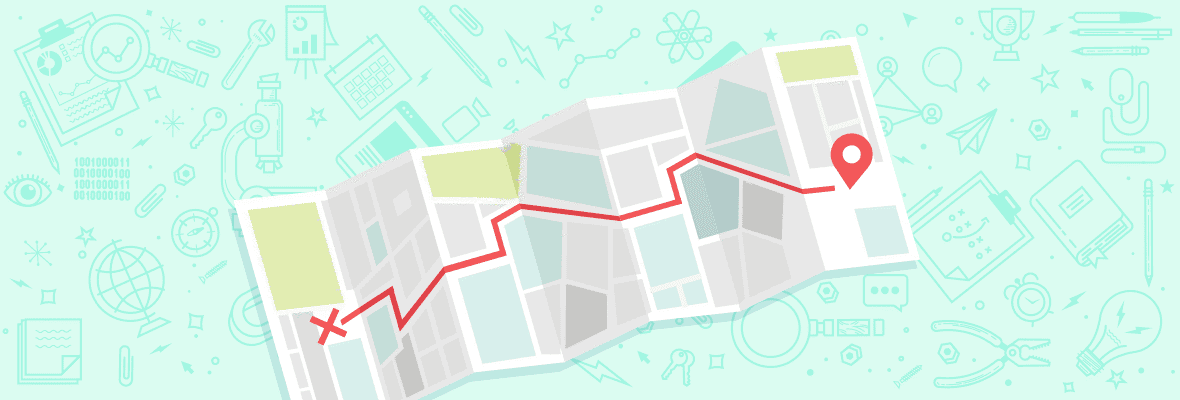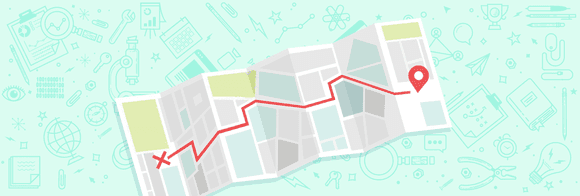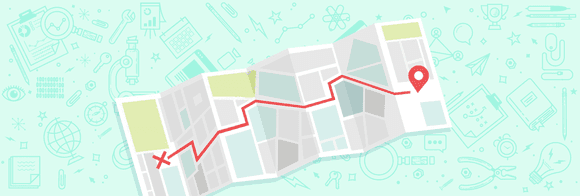
What Belongs on Your Local Business' About Page?
The author's views are entirely their own (excluding the unlikely event of hypnosis) and may not always reflect the views of Moz.
Want to have the best About page in town? This tutorial with mockup, key, and real-world examples is for you!
I received so much positive feedback on my column on what to put on your location landing pages; you inspired me to tackle another of these standard components of any local business website: the About page.
Many local brands are getting it right, but all too often, this page feels like an afterthought. Its content may be minimal, with no clear USP or call to action. It may even be a bit… stuffy, filled with insular talk instead of a really solid pitch to be chosen by the customer by speaking their language. And that’s why we need to start our tutorial with these two rock-solid principles of a strong About Page:
Principle #1
This is not your company’s About page; it is your customers’ About page. It’s for their use and meant to prove that your local business can fulfill their needs.
Principle #2
Because of Principle #1, you will publish this page with the central goal of converting visitors into customers by demonstrating that yours is the local business that best matches their values and merits their patronage.
With these two points in mind, we’re so ready to begin!
13 elements you can include on your local business About page
For this exercise, we’ll imagine you own a multi-location plant nursery, but the numbered elements can work for almost any business size and industry:
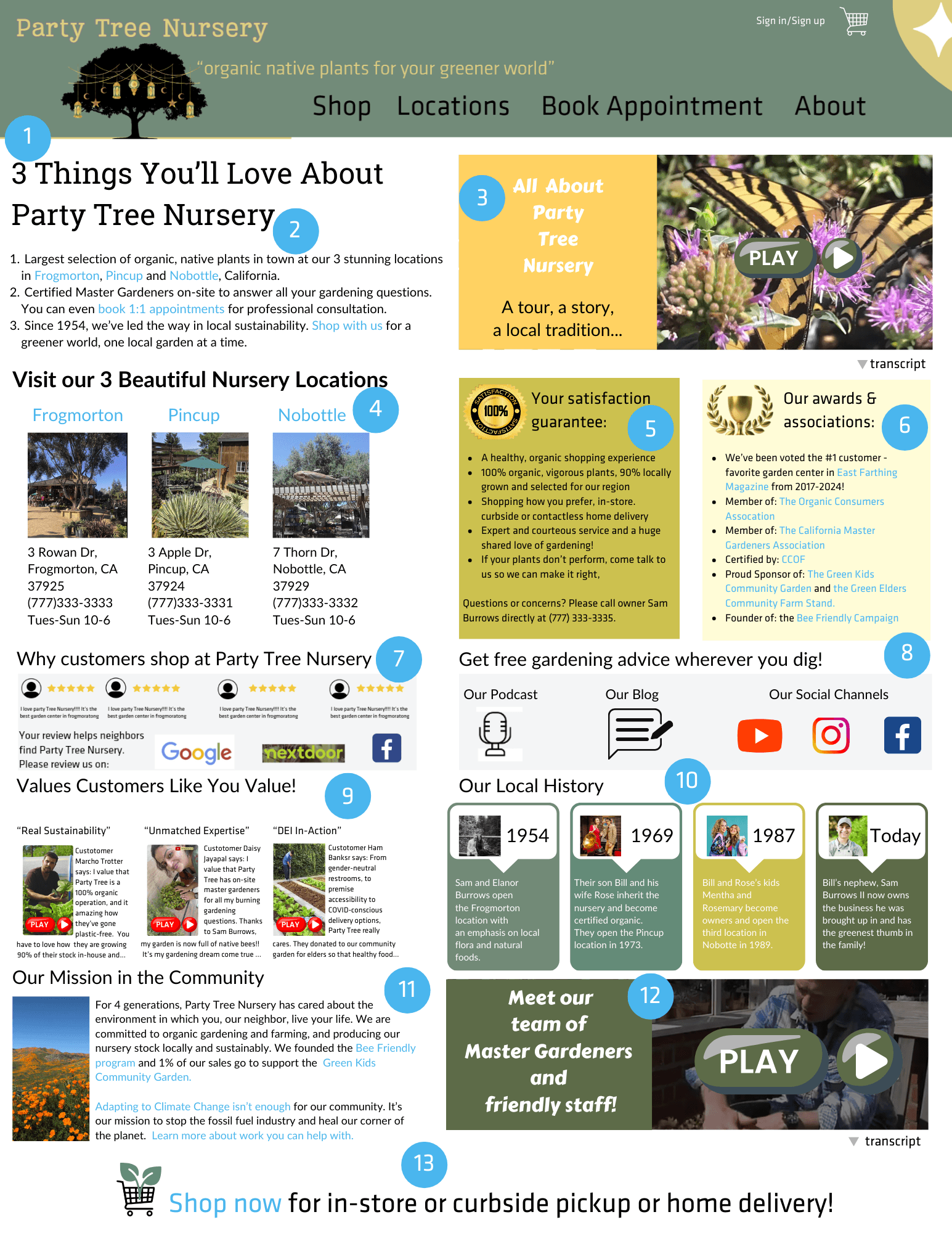
Key to the About Page Mockup
1. A <H1> tag that immediately addresses the customer
Most of the About pages I’ve seen on local business websites simply have “About X brand” in their primary header tag, and while there’s no harm in that, it will be so much more welcoming if you begin by turning the language toward the customer and talking about what they’ll love, right off the bat. After all, that’s why they’ve landed on your About page: to see how they’ll like you.
I find a short listicle header works really well to begin an About page, as in “3 Things You’ll Love About X Brand”. It speaks of “you” instead of “us,” it signals a sense of excitement, it includes the word “About” so the visitor knows they’ve landed on the right page, and it includes the brand name.
If yours is a single-location business, put the city name in the <H1> tag, too, but in this case, with a multi-location brand, we don’t want that there because it would be limiting.
2. A USP in your introductory text
This listicle hits the points our fictitious business knows its customers care about most: the largest local selection of organic native plants, on-site certified experts, and green thought leadership in the community. These factors are an expanded unique selling proposition (USP) for the brand based on their customer, keyword, and market research.
What are your top 3, top 5, or top 7 factors? Keep it short, with the goal of immediately connecting with the largest number of potential customers on the thing you’ve learned they want most.
Use this section to link out to key, relevant resources, as well. Our fictitious nursery is linking to its location landing pages, its consultation booking page, and its online store, all from within the listicle. Make the most of the space and of every word.
3. A strong, visual story
Whether you use an image slideshow or a video in this section, use the space to orient customers quickly to the look, feel, and story of your business. Showcase why your premises are worth a visit or how your skilled professionals will come to the customer for expert service.
Display your amenities, shelfies, views, equipment, common areas, parking, neighborhood, and staff. Whatever you know best represents your business to the public is what belongs this high up on the page. And don’t forget a video transcript for accessibility and SEO purposes
4. Contact information, even though this is your About page
Some visitors may wind up on this page trying to figure out how to contact you, so be sure to put that information upfront.
If you’re a single-location business, put your complete name, address, phone number, textline, email address, and hours of operation.
Suppose you’ve got multiple locations; link from here to their respective location landing pages. Our fictitious business has just three branches, so we can make a handsome visual presentation of them with links to their more detailed landing pages. If you’ve got dozens, hundreds, or thousands of pages, put your store locator widget here so customers can find the nearest branch.
5. Instill trust with a clear satisfaction guarantee
Let customers know what they can expect from your company and what you will do for them if anything doesn’t meet their expectations. If you have multiple policies (privacy, shipping, returns, etc.), link to the full versions of these from this section.
Do yourself the major favor of urging the customer to contact the business directly with their questions, concerns, and complaints. Our nursery has a direct line to the business owner, and this could save you a ton of negative reviews from customers who didn’t feel they’d be heard and helped in person.
Being approachable and responsive is the key to building an amazing reputation in your community. It’s also how you build the ‘T’ (trustworthiness) signal in Google’s E-E-A-T dynamic.
6. Display your credentials, associations, sponsorships, and awards
Speaking of local business E-E-A-T, develop your ‘E’ (expertise) by clearly displaying your credentials, license numbers, membership in industry associations, and community projects you host or sponsor. Show that you are genuinely involved in your industry and locale so that customers understand your organization is accredited and active.
And prove your “A” (authoritativeness) by showing any awards you’ve won from publications and associations. Link to your sources wherever possible to cement credibility.
7. Highlight your best reviews and ask for more
Show off some of the nicest words customers have written about your business, whether these stem from review platforms or some other form of testimonials you’ve gathered.
Remember that only 11% of consumers trust brand messaging over what customers say; let your customers tell your story. Other customers can relate to this easily. And don’t forget to ask existing customers to review your business by linking to several of your top review sources, like Google Business Profile, Facebook, and Nextdoor.
8. Create a multi-media menu
Whether your brand is making the most significant investment in a blog, podcast, social channels, newsletter, local radio show, regular local news column, or all of the above, put all of your multi-media publications in a simple grid so that customers can realize just how much you have to offer.
Even regular customers may have no idea you’ve got a monthly newsletter they can sign up for or that your owner has been appearing as a guest speaker on a local radio show for the past few months. Think of as many possible ways in which customers can connect with you and proudly link to them.
9. Explain your values
Your site may already have a company values page, and you can link to it from your About page, but even if not, make a statement you can stand behind and that you’ve learned is consistent with what your community wants.
Our fictitious nursery is cleverly letting customers explain what they value about the business via a series of video shorts that highlight things the business has worked hard to achieve, like sustainability, recognized expertise, and high DEI standards. Link to your blog posts, articles, or other content assets that vouch for these values.
10. Yes, you can have a timeline!
Often, this may be the only thing I find on the About pages of businesses large and small, and while they can’t stand on their own, they do have a place here.
Showcase key moments in your brand’s development that you think will resonate most with customers. Our sample nursery proves they’ve been family-owned for four generations and popular enough to expand over time.
What is the history of your business that will have the most meaning to your community? Need help creating a visually appealing timeline? Check out all the templates available in a program like Canva.
11. A mission statement that engages
Like the vision statement, you may already have a full page for your mission statement or plan to build one, and you should definitely link to it from this section. Just be wary of that in-house speak that sounds like an echo chamber.
Create a mission statement that invites involvement from the public on matters they care about. In our example, the mission statement closes with an invitation to customers to help the business fight climate change. How do you want customers to engage with your brand’s mission? How can you best invite them?
12. Show your real people
One of the best competitive advantages of local businesses is that they are staffed by people in the community whom customers get to interact with face-to-face.
Use images or videos to introduce the business owner and public-facing staff and, above all, to showcase expertise (remember that “E” in “E-E-A-T”). Your business depends on making the strong pitch that customers should shop locally with you, instead of virtually, because of the outstanding level of knowledge you have in your subject, whatever that subject is.
Use text or a video transcript to underscore the depth of your wisdom, the year of your training and experience, and the friendliness of your customer service.
13. Never end a page without a last CTA
By now, you’ve made your best-effort presentation to convince a visitor of your valuable offering.
Your last step is to close the page with the action you most hope your reader will take, whether that’s shopping online with you for curbside pickup or home delivery, coming to your location, calling you, booking an appointment, submitting a form, or something else. These are the last words your About page gets to have with the potential customer – make them count! And just like that, by incorporating some or all of these elements, you could have the best About page in each of the local markets you serve.
You might incorporate other features not included in our mockup, such as links to employment opportunities, local radio and TV spots, additional press coverage, extensive staff bios, major company news, B2B cross promotions, an events calendar, and so much more.
My mockup screenshot has limited space, but your About page can be as extensive as you want it to be, provided what you’re including is of interest to your audience. Just keep the principles in mind, and there’s no end to what you can do with this often-overlooked old standby of nearly all websites.
7 inspirational local businesses getting About page elements right
I want to close with just a few inspirational examples to get you into the most creative headspace. These are real-world local businesses I’m applauding.
1. A genuinely fascinating timeline
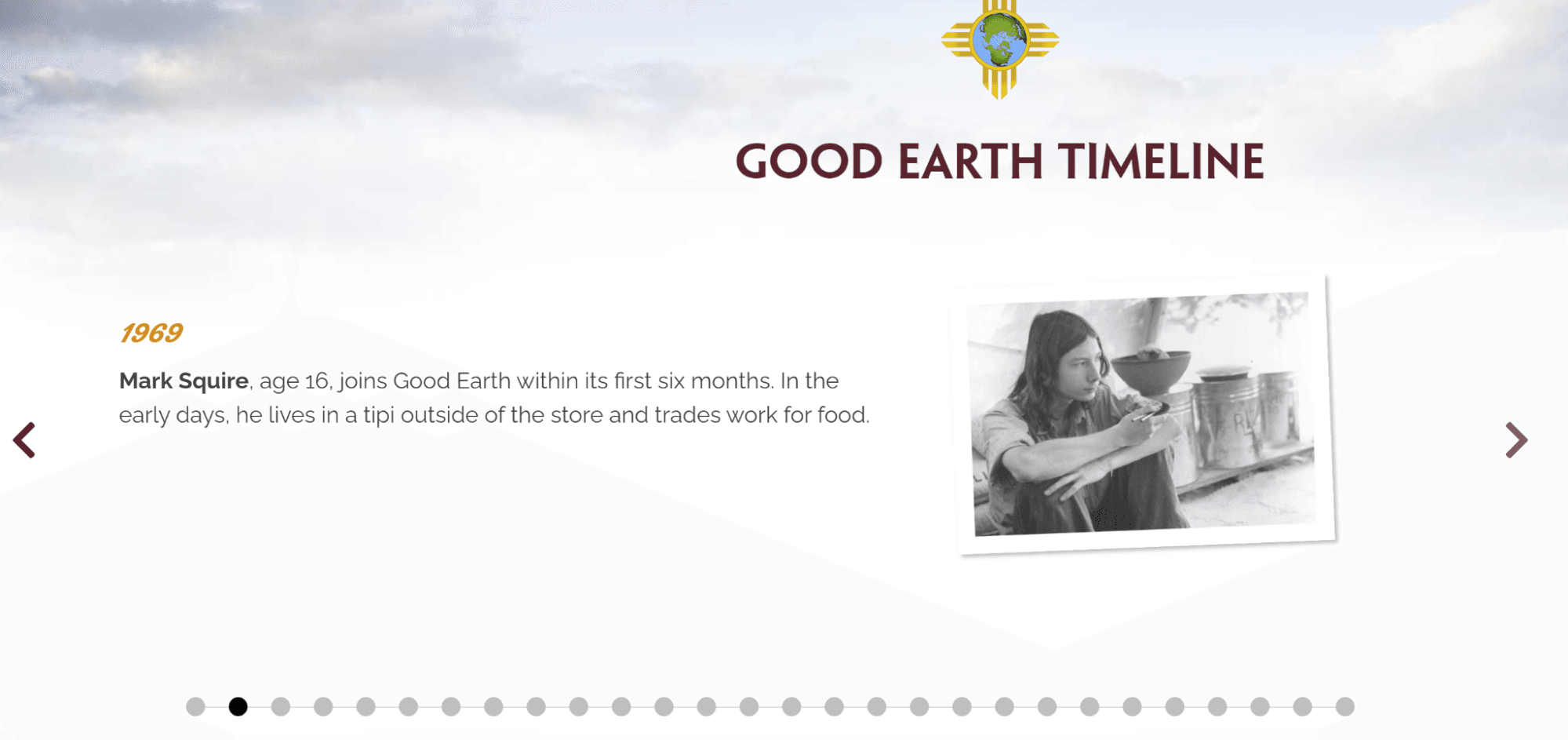
Some businesses have truly engaging origin stories, and I love this timeline from Good Earth Natural Foods that begins with a 16-year-old boy camping outside a shop and working for food and ends with him owning the company and writing some of the key regulatory guidelines for organic food standards in California.
Actually, the story doesn’t end there; it goes on to show all the good the business has done in its community, from launching an organic school lunch program to banning single-use plastic to that 16-year-old camper being elected to the Board of Directors of the Organic Trade Association.
Almost any customer would be intrigued by the twists and turns of this tale, and it certainly solidifies that the organization is run by folks who deeply understand what organic food is all about.
What’s the real hopes-and-dreams backstory behind your business?
2. A humorous owner bio

If you’ve got the quirky sense of humor to name your florist shop Back to the Fuchsia, then your bio is unlikely to be solemn or high-flown in tone. I don’t remember how I first came across this About page, but the fact that the owner wanted to be a floral designer, “much to her parent’s dismay,” made me laugh enough to save it as a great example of originality.
Depending on your industry, it might be the light and funny approach that could connect best with your audience. Ms. Smiczek says she specializes in unusual arrangements. If a customer were looking for something really different and colorful, the branding of this local business, combined with the tone of the content, would likely signal that the end product would be no ordinary bouquet.
What is the right tone for your business, and how will you convey your style and approach on your About page?
3. Owner/staff photos that convey authenticity
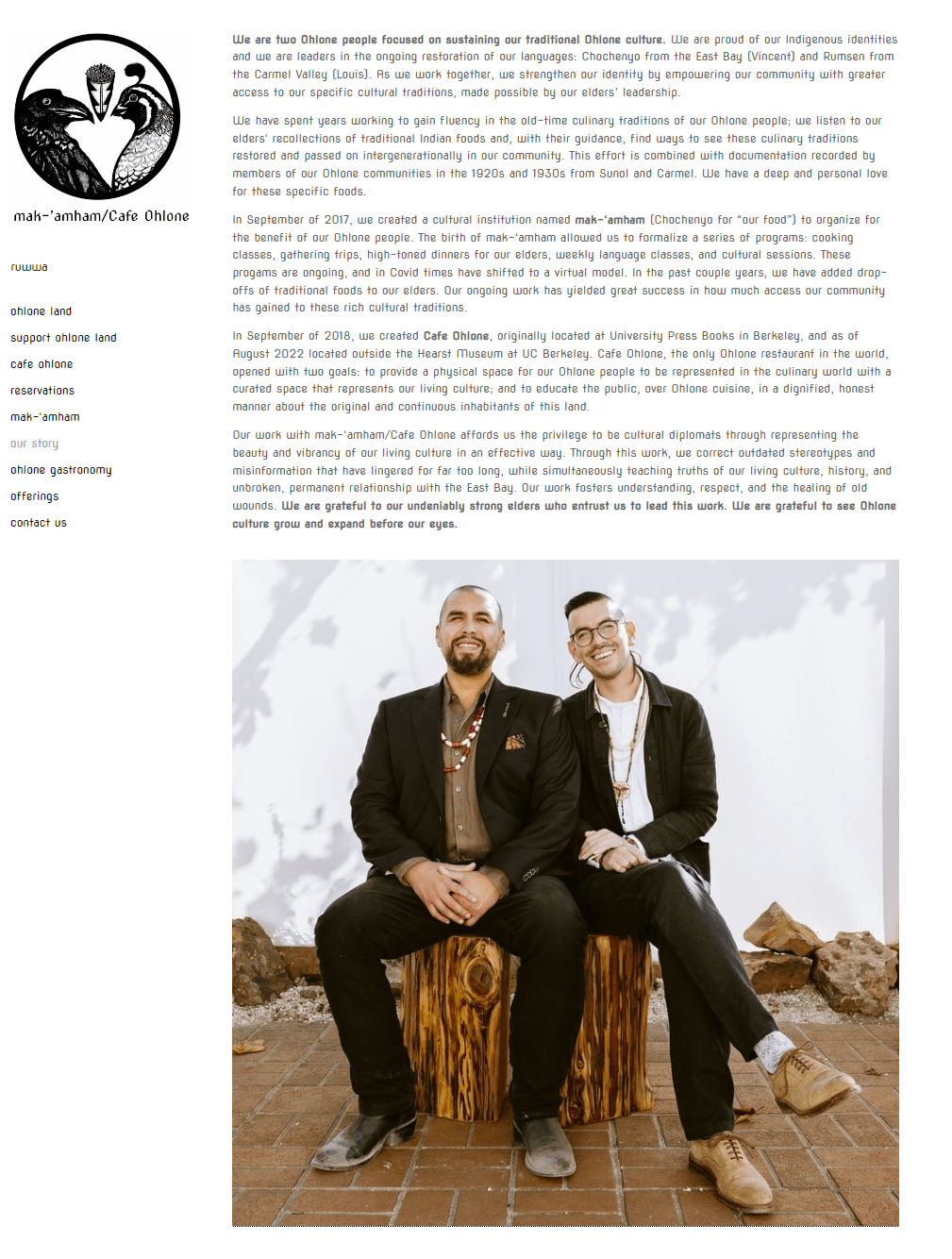
I’m not alone in predicting that we’re all about to get a lot wearier of being “handled” by AI substitutes for customer service and more eager to be served by real, good folks.
I love this photo of the owners of Mak-’amham Cafe Ohlone. It exudes authenticity and abundantly signals to diners that this is a real business run by real people. It’s unpretentious, relatable, and friendly. And, in this case, I can personally confirm that the people behind this unique restaurant are as friendly and approachable as their photo makes them look; this business isn’t far from where I live, and the owners once very kindly gave me their recipe for amazing hazelnut milk.
What do your photos convey to visitors to your About page? Do they inspire the public to want to get to know you and do business with you?
4. Customer-centric text
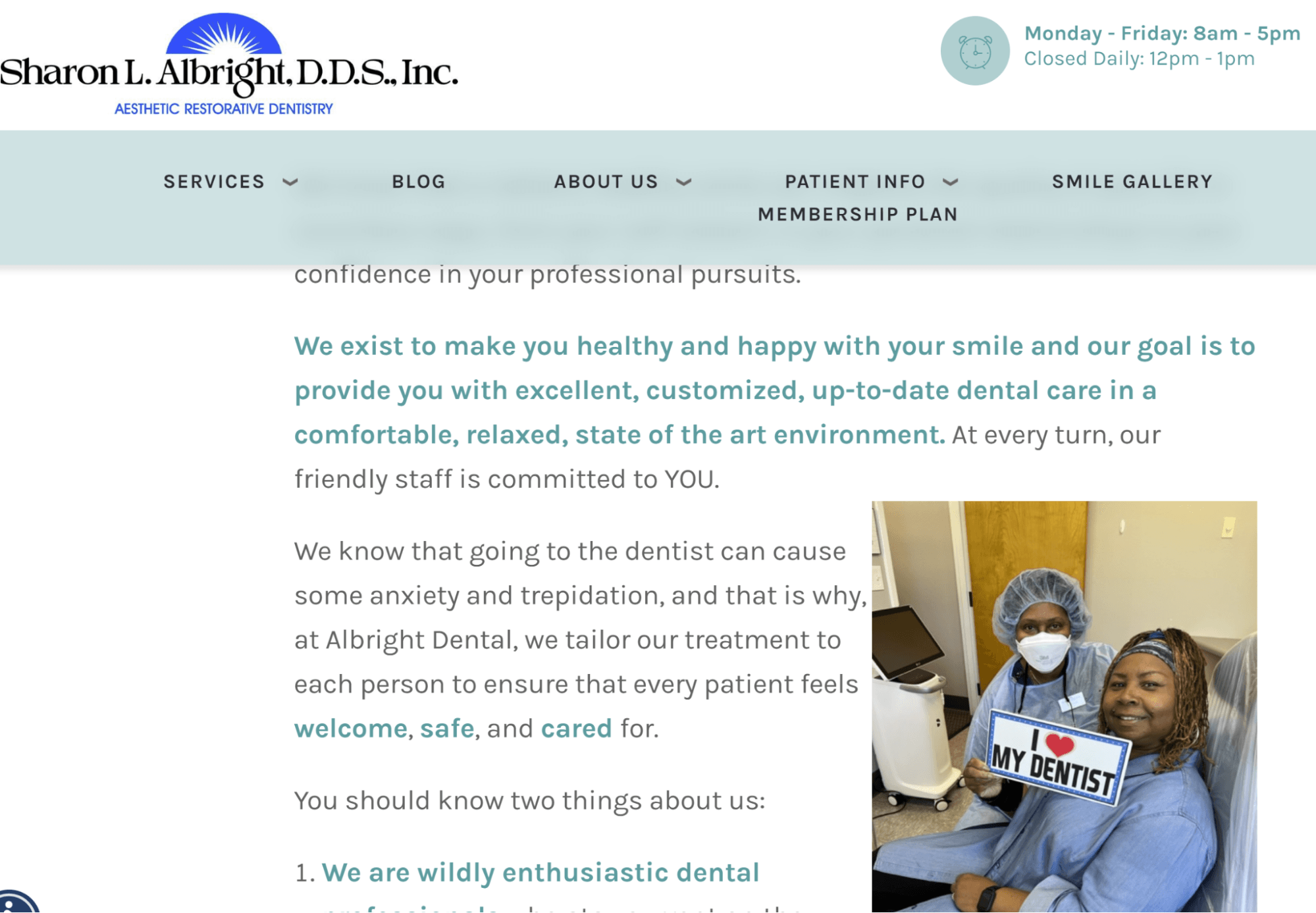
I’ve rarely seen a more personable message on a dental practice About page than the one published by Dr. Sharon Albright. Look at all the yous in this copy and the statement that the practice only exists to make you healthy and happy. The accompanying photo adds to the friendliness of the presentation. I’ve used this same medical practice as an example in the past for other things I’m seeing them get so right, and I wasn’t surprised to notice that their About page exudes a patient-centric approach to healthcare.
What can your business do to address customers directly and put them at ease about how you’ll take care of them?
5. Customers’ words on your About page
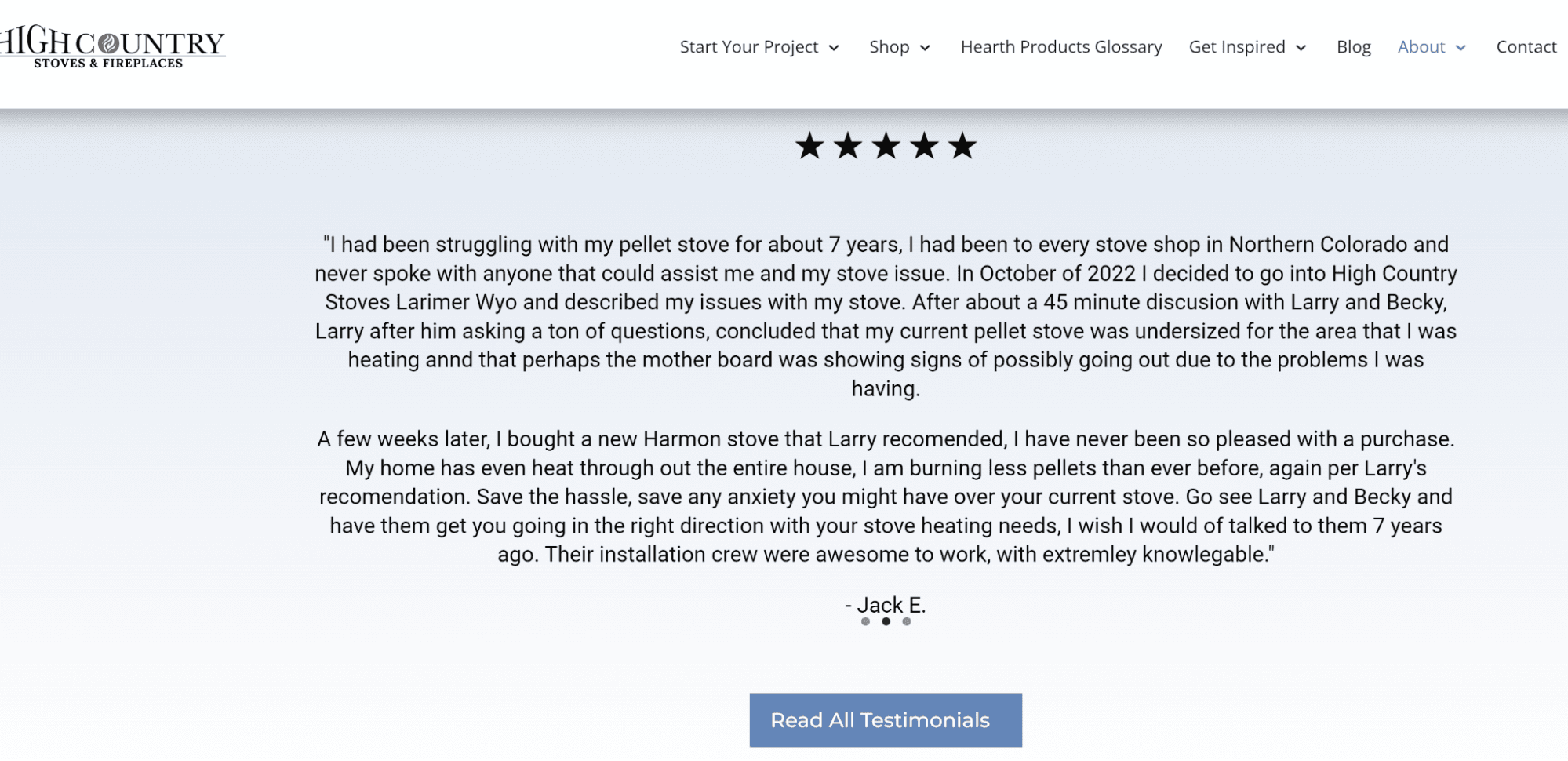
I may have written more about Google-based reviews over the years than 99% of the people on Earth, but I must confess, I maintain a soft spot for older-school testimonials.
I like this section on the High Country Stoves website because it shows how, even when a local business is creating an About page, they can center their customers because, at heart, they know their company is about its supporters. I like how these testimonials tell personal stories in detail that other potential customers will connect with.
What are you doing to promote the customer-centric nature of your business on your About page? Customers' own words tell the best stories.
6. Fantastic video storytelling
One of the best examples of a multi-location business getting it right comes from REI’s About page video on why their operation being a co-op makes their brand different. Kudos, in particular, on how they directly address the viewer in this and make them part of the story.
How could your brand highlight your USP with video?
7. I heart a big, clear closing CTA
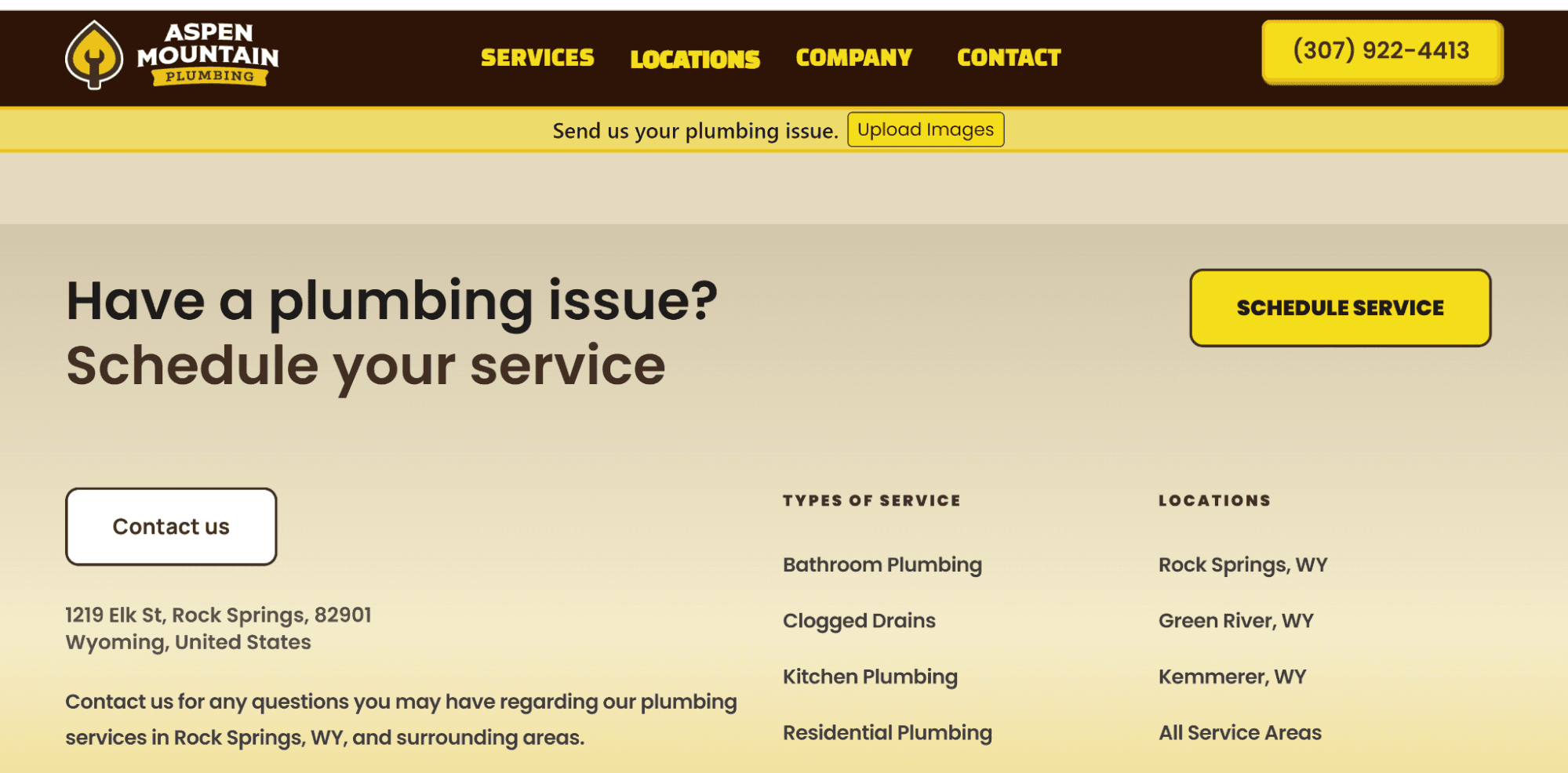
Hats off to Aspen Mountain Plumbing for closing their About page with this large CTA. I love this! It’s so easy to overlook this step, but no page on your website should lack a CTA, and after you’ve spent all this time on your About page hoping to convince a visitor of your value, it would be a shame to miss this last directional step.
Calls-to-action belong all over your About page, but what’s the best one you want to close your page out with?
And that’s a wrap! I hope today’s column has given you some healthy brain food for revisiting your current About page and seeing how you can make it even better, but this is definitely only one item on the big content marketing menu.
Are you hungry for more tips? Get four free chapters of actionable advice in The Local Business Content Marketing Guide, including strategic advice from a dozen of the world’s most respected local SEOs. Creativity and success await!
